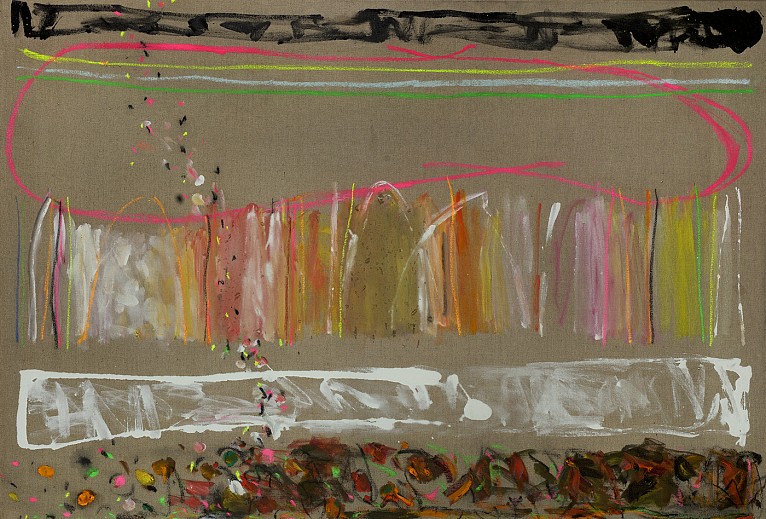
Joyce Weinstein
August 23, 2016 - Piri Halasz for From the Mayor's Doorstep
Joyce Weinstein too paints from nature, or the landscape. At some point in the late 20th century, she and her husband, the painter Stanley Boxer, moved from their longtime Manhattan home to exurban Ancramdale, in a bucolic part of upstate New York still famous for its horse farms.
All that open farmland seems to have really turned Weinstein on, so although Boxer died in 2000, she has stayed on in Ancramdale and continues to explore a theme that she calls “Country Fields.”
This is a theme or series that she began at least eight years ago. I reviewed some examples of it in a January 2009 group show at the short-lived gallery operated by Larry Salander in Millbrook, NY. I also reviewed Weinstein’s show of it at Ezair on Madison Avenue in the fall of 2010.
The entire series is abstract, of course, but the paintings are built around rectangles and squares. These are often bordered by black lines and alternate between being painted with a single color and covered with scribbly up-and-down or sidewise lines of paint.
Maybe it’s just my fantasy, reflecting the farm where I spent five years as a child, attending a boarding school in the Adirondacks, but this combination of shapes and lines makes me think – more often than not -- of horse country.
Sometimes, the view is aerial: I think of land divided up by fences into pastures where horses graze and fields planted in summertime with I can’t say exactly what – maybe corn for pigs and humans, maybe hay and oats for horses to eat in the winter?
Sometimes, the view is landlocked and vertical: one sees up-and-down scribbly lines resembling nothing so much as growing grass or hay.
Anyway, you get the general idea—and the landscape associations are emphasized by the artist’s crisp but still gentle and restrained use of color.
She seems to start with quiet whites, grays, browns and blacks, and then works into occasional or even pronounced highlights of pink or lime or yellow or purple. Still, everything looks natural, not machine-made or synthetic.
The lines, squares and rectangles are mostly set upon a linen ground. This appears to be a more recent practice of the artist, and offers a more welcome contrast than conventional canvas to the paint surfaces. The whites and yellows benefit especially as the linen is a deeper tan than canvas and sets off the lighter colors to perfection.
Although the scratchy lines convey a certain sense of itchiness or irritation, they are set in a context of quiet reflection. Thus as a whole these paintings are harmonious, not grating, organized and not chaotic.
Above all, they are triumphantly human – though occasionally, a wild little sun puts in an appearance, as in the small gem that greets the visitor upon entering the gallery, and is entitled, “Winter Country Fields and Sky” (2015).
Back to News
